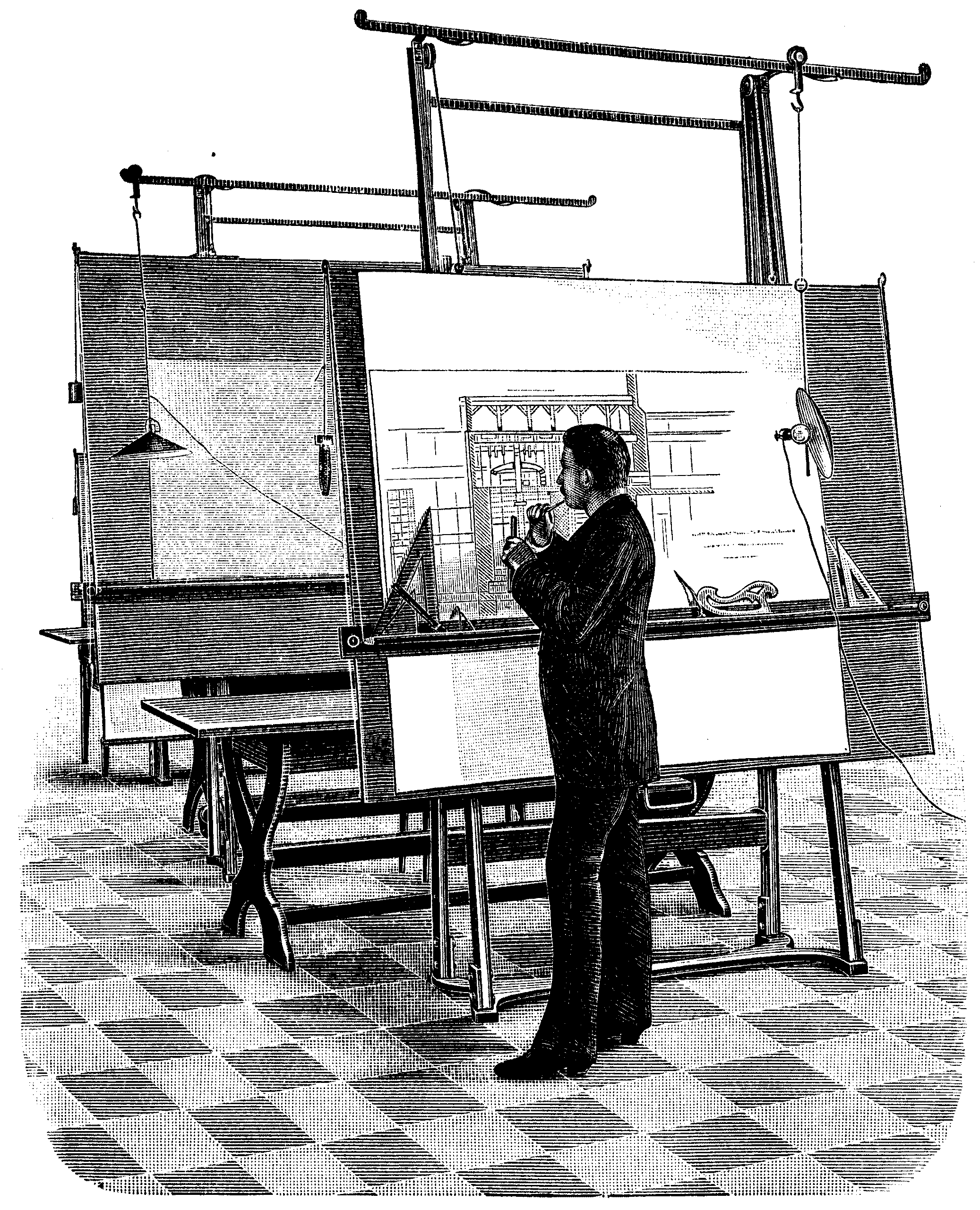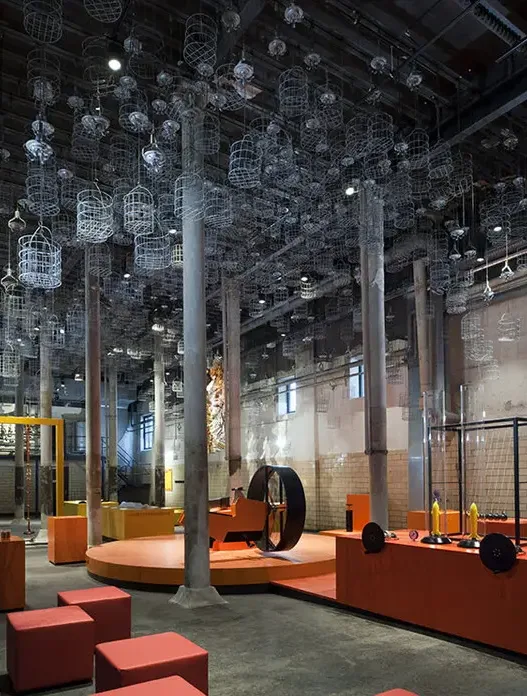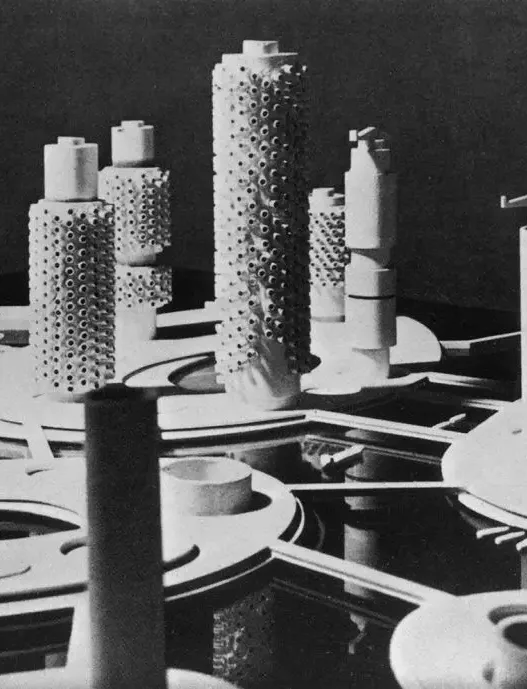Architects, like artists, shape the environments in which we live, work and play. Their feelings about the sector change over time, influenced by a multitude of factors such as historical context, technological advances, design philosophies, globalisation and changing client expectations. Understanding these changes provides insight into the architectural profession and the feelings of those involved in it.

Evolution of Architectural Practice
Historical Context
The journey of architecture goes back to the depths of history. From the magnificent structures of ancient civilisations to the streamlined designs of modernism, every period has left its mark on architectural practices. In early times, architecture was primarily functional, focussing on shelter and security. As societies progressed, architectural styles evolved, reflecting cultural values and technological capabilities.
Architects today often reflect on the lessons of history. They draw inspiration from past movements and learn from both the successes and failures of previous designs. This historical awareness fosters a sense of responsibility and pride as architects strive to create buildings that honour the past while serving contemporary needs.
Technological Advances
The architectural landscape has changed dramatically with the advent of new technologies. Computer-aided design (CAD) software has revolutionised the way architects visualise and develop their ideas, enabling complex designs that were once unimaginable. The introduction of Building Information Modelling (BIM) has further improved collaboration, allowing architects to work seamlessly with engineers and contractors.
These technological tools have not only changed the design process, but have also influenced how architects perceive their role. Many feel empowered by the possibilities offered by technology and see it as a bridge between creativity and practicality. However, this dependence on technology can also lead to concerns about losing the human touch in design, prompting architects to find a balance between innovation and art.
Changes in Design Philosophy
As the world changes, so do the philosophies that shape architectural design. In recent years, there has been a shift towards sustainability and environmentally friendly practices. Architects are increasingly considering the environmental impact of their designs, striving to create buildings that minimise energy consumption and promote well-being.
This focus on sustainability has also changed the way architects think about their work. Many feel a deep sense of purpose, realising that their designs can contribute to a healthier planet. But this shift comes with challenges, as architects must navigate their way through the complexities of green building practices and regulations. The desire to create meaningful and sustainable spaces often conflicts with budget constraints and client expectations.
The Impact of Globalisation
Globalisation has significantly influenced the practice of architecture, enabling the exchange of ideas and styles across borders. Architects are now exposed to a wide range of influences, from traditional designs in Asia to modernist practices in Europe. This cross-pollination of ideas has led to innovative approaches that blend different cultural elements.
While globalisation enriches the architectural landscape, it also brings challenges. Some architects express concern about the homogenisation of design and fear that unique regional identities may be lost. This tension between embracing global influences and preserving local character creates a dynamic dialogue within the profession, prompting architects to explore how they can honour cultural heritage while innovating.
Changes in Client Expectations
The relationship between architects and their clients has evolved significantly over the years. Clients today are more informed and engaged, often coming to the table with specific visions and demands. This shift has led to a more collaborative approach where architects and clients work together to refine ideas and achieve common goals.
Many architects appreciate this shift and see it as an opportunity to create more personalised and relevant designs. But rising expectations can also create pressure. Architects must strike a delicate balance between guiding clients and fulfilling their wishes, while remaining true to design principles. This ongoing negotiation affects how architects feel about their roles and responsibilities in the industry.
As a result, architects’ feelings towards their profession are shaped by a rich tapestry of historical influences, technological advances, evolving design philosophies, globalisation and changing client expectations. Reflecting on their experiences, many architects feel fulfilled by their work, with a desire to create inspiring and enduring spaces. However, the challenges they face also lead to a constant exploration of what it means to be an architect in an ever-changing world.
The world of architecture is both exciting and challenging, full of creativity and innovation. For architects, years of practice shape not only their professional skills, but also their perspective on the industry as a whole. As they navigate through various projects and experiences, they develop a rich insight that reflects their journey. This research explores the thoughts of experienced architects, highlighting their challenges, successes, lessons learnt, the importance of mentoring and personal development.
Personal Reflections from Experienced Architects
Experienced architects often find themselves looking back on their careers with a mixture of nostalgia and realism. They recall the initial excitement that sparked their interest in architecture with the desire to create spaces that inspire and enhance people’s lives. Over the years, they witness the evolution of architectural styles, technologies and social expectations that continually shape their approach to design. These reflections are not only about the buildings they design, but also about the relationships they build with their clients, colleagues and the communities they serve.
An architect’s emotional journey is filled with moments of triumph and frustration, each contributing to their understanding of what it means to be an architect in today’s world. Through these reflections, they have a clearer idea of their place in an industry that is constantly evolving.
Challenges Over the Years
Every architect faces challenges that test their resolve and creativity. The pressure of tight deadlines can lead to sleepless nights, while budget constraints often force architects to think outside the box. Meeting client expectations is another obstacle, as clients may envision something completely different from what is feasible. The industry also faces external pressures such as regulatory changes, environmental concerns and the need for sustainable practices, which can complicate the design process.
Another challenge is the rapid advancement of technology. While tools such as Building Information Modelling (BIM) and virtual reality have revolutionised the field, keeping up with these innovations requires constant learning and adaptation. Despite these obstacles, architects often find that overcoming such challenges leads to personal and professional growth, increasing their problem-solving skills and resilience.
Success Stories and Milestones
Amidst the challenges, there are countless success stories that architects cherish. Whether it is a community centre, a residential complex or a public landmark, completing a significant project can be a defining moment in an architect’s career. These milestones often represent not only professional achievements, but also personal triumphs that reflect years of hard work, collaboration and creativity.
Many architects are delighted to see their designs come to life and become an integral part of their communities. They often share stories of how their projects have positively impacted the lives of others, whether by providing shelter, creating gathering spaces or revitalising neglected areas. Such success stories are a reminder of why they chose this profession: to make a tangible difference in the world.
Lessons learnt
Years of experience bring with it a treasure trove of lessons. Architects learn that design is not just about aesthetics; it is about functionality, sustainability and community engagement. They understand the importance of listening to clients and stakeholders to create spaces that truly meet their needs.
Collaboration emerges as a key theme in the lessons learnt. Successful projects often result from teamwork, with architects working hand in hand with engineers, contractors and clients. This collaborative spirit fosters an environment of creativity and innovation, leading to better results. Architects also recognise the value of adaptability, as the ability to pivot in the face of challenges can be the difference between the success and failure of a project.
Mentoring and its importance
Mentoring plays a crucial role in shaping architects’ careers. Many experienced architects emphasise the influence of their mentors on their professional journey. These relationships often provide guidance, support and invaluable insights that help young architects navigate the complexities of the industry.
Mentors can share their own experiences and offer lessons learnt from past mistakes and successes. They encourage mentees to embrace challenges and see them as opportunities for growth. This transfer of knowledge not only strengthens individual careers, but also enriches the architectural profession as a whole. While experienced architects mentor the new generation, they ensure that creativity, integrity and community values remain at the forefront of architectural practice.
Personal Development and Growth
An architect’s journey is also a journey of personal development. As they gain experience, they often develop a deeper understanding of their values and aspirations. Architecture is not just about designing buildings; it is about shaping experiences and strengthening connections between people and places.
Through their work, architects learn to balance their creative instincts with practical considerations and develop their critical and empathetic thinking skills. They become more attuned to the cultural and social contexts of their projects and realise the importance of inclusivity and accessibility in design. This personal development enriches their professional practice, enabling them to create spaces that resonate on a human level.
As a result, the reflections of experienced architects reveal a rich tapestry of challenges, achievements and valuable lessons. As they navigate the complexities of the architecture industry, they not only shape the physical environments around us, but also contribute to the ongoing evolution of the profession. Through mentorship and personal development, they ensure that the legacy of architecture continues to inspire future generations.
Architecture is more than just the creation of buildings; it is about shaping the environments in which we live and the experiences we have in those environments. After years of practice, many architects find themselves reflecting on the evolution of the industry. Their emotions often encompass a mixture of pride, frustration, hope and a deep-seated desire for change. The architectural landscape is constantly changing, influenced by cultural, technological and environmental factors. When architects look back on their careers, they often reflect on current trends and how they fit with their vision for the future.
Current Trends in Architecture
The architecture sector is currently witnessing a transformation driven by the need for innovation and sustainability. Architects are not only designing buildings, but also creating spaces that respond to the social and environmental challenges of our time. The trends dominating today’s architectural conversations reveal a collective consciousness among architects about their role in society.
Sustainable Design Practices
Sustainable design has moved from being a niche interest in architecture to a fundamental principle. Architects recognise that their buildings have a significant impact on the environment and many are committed to minimising this impact. This includes using environmentally friendly materials, maximising energy efficiency and designing spaces that promote well-being.
For example, the Bullitt Centre in Seattle is often cited as one of the most “green” commercial buildings in the world. It exhibits features such as a rainwater harvesting system, compost toilets and a design that maximises natural light. The success of such projects reflects a wider shift in the industry: architects are increasingly prioritising environmental stewardship to ensure that their designs contribute positively to the planet.
Smart Building Technologies
With the development of technology, smart buildings are becoming an important trend in architecture. Architects are now integrating advanced technologies into their designs, enabling buildings to interact with their occupants in innovative ways. Smart sensors, automated systems and energy management tools are improving the functionality and efficiency of spaces.
Take the Edge in Amsterdam, for example. This office building uses smart technology to optimise lighting, heating and even air quality according to the number and preferences of its occupants. Such developments not only improve the user experience, but also reduce energy consumption, reflecting the growing realisation of the need for intelligent design in the modern world.
Minimalism versus Maximalism
The debate between minimalism and maximalism has become a central theme in contemporary architecture. Minimalism advocates simplicity, clean lines and a “less is more” philosophy. This approach can create serene environments that encourage peace and focus. On the other hand, maximalism embraces bold colours, rich textures and a sense of abundance, celebrating complexity and individual expression.
Architects often find themselves navigating this spectrum, balancing functionality and aesthetics. Projects such as the Heydar Aliyev Centre in Baku, designed by Zaha Hadid, exemplify maximalist principles with their fluid forms and dynamic spaces, while minimalist designs such as Tadao Ando’s Church of Light in Japan emphasise the beauty of simplicity. This ongoing dialogue between the two philosophies allows architects to explore their creativity and push the boundaries of design.
Adaptive Reuse
Adaptive reuse is another important trend that resonates with architects committed to sustainability and historic preservation. This practice involves redesigning old buildings for new uses, giving them a second life while preserving their historical significance. It not only conserves resources, but also helps to preserve the cultural fabric of communities.
The High Line in New York is a notable example of adaptive reuse. Once an abandoned elevated railway, the High Line has been transformed into a vibrant public park that demonstrates how innovative design can breathe new life into forgotten spaces. Architects are increasingly recognising the value of such projects as they celebrate history while responding to contemporary needs.
Community Involvement in Design
As architects reflect on their experiences, many recognise the importance of community involvement in the design process. Involving local communities ensures that the spaces created serve the needs and aspirations of those who will use them. This collaborative approach fosters a sense of ownership and pride among residents.
Projects such as the participatory design of the Community Centre in Tijuana, Mexico, highlight that architects can work with community members to create spaces that truly reflect their values and culture. By listening to the voice of the community, architects can design more inclusive and meaningful environments.
In conclusion, the world of architecture is rich in opportunities for growth and innovation. After years of practice, architects are increasingly aware of their responsibilities to society and the environment. In shaping current trends, they strive to create designs that not only fulfil functional needs, but also inspire and uplift the communities they serve. Through sustainable practices, smart technologies and a commitment to collaboration, architects continue to shape the world around us, leaving a lasting impact on future generations.
The profession of architecture is a dynamic and constantly evolving field that has undergone significant transformations over the years. After years of practice, architects often have a wealth of experience and insights into the sector, shaped by their education, practical experience and the changing design and construction environment. This research examines how education shapes architects and the various aspects that contribute to their outlook on the industry.
The Role of Education in Shaping Architects
Education serves as the cornerstone of an architect’s journey, laying the groundwork for both technical skills and creative thinking. Lessons learnt in architecture schools not only focus on design principles and structural integrity, but also emphasise critical thinking, problem solving and collaboration – skills necessary to navigate the complexities of the real world. As architects progress in their careers, they often reflect on how their educational experiences have influenced their design philosophy and professional practice.
Changes in the Architecture Curriculum
Over the years, the architecture curriculum has evolved significantly. While traditional programmes focused heavily on theory and historical styles, today’s education incorporates advanced technologies and sustainable practices. Students now interact with digital tools such as Building Information Modelling (BIM) that allow for more accurate and efficient design processes. This shift has prepared new architects to tackle contemporary challenges such as climate change and urbanisation, and fostered a generation that is not only skilled in design but also sensitive to social and environmental responsibilities.
The Importance of Internships
Internships play a crucial role in bridging the gap between academic learning and professional practice. Internships give prospective architects first-hand experience in real-world projects, allowing them to apply theoretical knowledge in practical settings. Many architects fondly remember their internships, describing them as pivotal moments in their careers. These experiences often shape their understanding of teamwork, project management and client interactions and equip them with the tools necessary to navigate the complexities of the architectural profession.
Continuing Education Opportunities
As the architectural environment evolves, so must the architects who live in it. Continuing education is vital, keeping professionals abreast of new technologies, building codes and design trends. Many architects attend workshops, seminars and online courses to expand their knowledge and improve their skills over the years. This commitment to lifelong learning not only develops their skills, but also fosters a sense of adaptability that keeps them current in a rapidly changing industry.
Networking and Professional Development
Building a strong professional network is very important for architects. Relationships built during school, internships and professional activities can lead to collaborations and opportunities that significantly impact an architect’s career. Many architects mention the importance of mentorship and peer support in their professional development. These connections often lead to a shared exchange of knowledge, inspiration and ideas that can influence design approaches and career trajectories.
Impact of Online Learning Platforms
The rise of online learning platforms has changed the way architects approach education and professional development. These platforms offer flexible learning opportunities, enabling architects to develop their skills without the constraints of traditional classroom environments. Courses on design software, sustainable practices and new construction methods are easily accessible, allowing architects to tailor their learning experience to their interests and career needs. As a result, many architects find themselves better equipped to innovate and adapt to changes in the industry.
As a result, an architect’s journey is deeply influenced by their educational experience and the continuous learning that follows. Through evolving curricula, valuable internships, continuing education, strong networking and the flexibility of online learning, architects develop a rich tapestry of knowledge and skills. This foundation not only shapes their professional identity, but also guides their perspective on the architectural industry as they reflect on their years of practice. The insights gained from these experiences often lead to a deep appreciation for the art and science of architecture and inspire future generations to continue pushing the boundaries of design.
Architecture is much more than the art of building; it is a reflection of society, culture and technology. After years of navigating the complexities, architects often have deep insights and feelings about the state of their industry. Their experiences shape their perspectives on what has been achieved and what the future holds. In this research, the future outlook of the architecture sector is discussed, highlighting expected challenges, emerging design trends, the impact of climate change, the future of urban planning and anticipated technological innovations.
Future Outlook of the Architecture Sector
As architects look towards the horizon, they consider an industry rich in potential but full of challenges. The future of architecture is not just about building buildings; it is about creating sustainable environments that enhance quality of life. Architects envision a world where their designs respond to the needs of communities while embracing advances in technology and sustainability. This perspective is characterised by a commitment to innovative practices that prioritise both aesthetics and functionality.
An important aspect of this future is the growing demand for sustainable architecture. As society becomes more conscious of its environmental footprint, architects are at the forefront of designing eco-friendly spaces. They see their role as crucial in promoting a greener future where buildings serve as both functional spaces and guardians of the environment.
Expected Challenges
Despite the optimistic vision, architects face several challenges that may hinder progress. One of the most pressing issues is the volatile economy, which can directly affect funding for new projects. Economic downturns can lead to budget cuts, resulting in compromised design quality or stalled projects. In addition, architects have to operate in an increasingly competitive marketplace, which requires constant adaptation to new trends and technologies in order to survive.
Another challenge is the regulatory environment. Architects often find themselves struggling with a myriad of zoning laws, building codes and safety regulations that can complicate the design process. Keeping up with these requirements is essential, but can be time-consuming and inhibit creativity. There is also an increasing need for interdisciplinary collaboration, requiring architects to work more closely with engineers, urban planners and environmental scientists, which can be both a challenge and an opportunity for innovation.
Emerging Design Trends
In response to these challenges, architects are adopting new design trends that reflect societal changes and advances in technology. One prominent trend is biophilic design, which aims to connect people with nature through the integration of natural elements into the built environment. This approach not only enhances the aesthetic appeal of a space, but also promotes the well-being and productivity of its inhabitants.
Another exciting trend is adaptive reuse, where existing buildings are redesigned to serve new functions. This practice not only preserves historic architecture, but also reduces waste and the need for new materials. As cities grow and develop, architects are increasingly tasked with finding creative solutions to re-imagine old spaces for contemporary use.
Impact of Climate Change
Climate change poses a significant challenge for architects, affecting their designs and the materials they choose. Rising temperatures, increased flooding and extreme weather events are requiring architects to rethink traditional design approaches. They are now prioritising flexibility and creating buildings that can withstand environmental pressures while minimising their carbon footprint.
Architects are also exploring renewable energy sources and sustainable materials more than ever before. Solar panels, green roofs and rainwater harvesting systems are becoming standard features in modern architecture. By integrating these elements, architects not only contribute to a healthier planet, but also help their clients save on energy costs in the long term.
The Future of Urban Planning
The future of architecture is inextricably linked to urban planning. As cities grow, the need for thoughtful urban design becomes critical. Architects envision urban spaces that prioritise walkability, public transport and green spaces, fostering a sense of community and reducing dependence on cars.
Smart city initiatives that utilise technology to enhance urban living are gaining increasing traction. Architects will play a vital role in designing spaces equipped with smart technologies that are not only functional but also increase efficiency and connectivity. This approach aims to create urban environments that respond to the needs of their inhabitants and promote a higher quality of life.
Foreseen Technological Innovations
Technology is revolutionising architecture and the future promises even more groundbreaking innovations. Building Information Modelling (BIM) has transformed the way architects design and visualise projects, enabling greater collaboration and efficiency. As this technology evolves, architects expect even more sophisticated tools to streamline the design process and improve accuracy.
Furthermore, developments in virtual reality (VR) and augmented reality (AR) will change the way architects interact with clients and stakeholders. These technologies will deliver immersive experiences that allow clients to tour spaces before they are built. This not only improves communication, but also provides invaluable insights at the design stage.
As a result, architects navigate a complex landscape of challenges and opportunities as they look to the future. Their experience in the sector reveals a hopeful yet realistic outlook where sustainability, innovation and community engagement are paramount. As architects adapt to changing conditions and embrace new technologies, they will continue to shape the built environment to reflect and enhance the world around them.
Architecture is much more than a profession; it is a lifelong journey full of creativity, challenges and personal development. As architects reflect on their years in the profession, they find themselves reflecting not only on the buildings they have designed, but also on the evolution of their thinking about the industry. This exploration reveals a tapestry of emotions, insights and lessons learnt as experienced architects share their experiences and perspectives on what it means to be part of this dynamic field.
Conclusion Reflections on the Journey
The architectural journey is a continuous process of learning and adaptation. Many architects experience a deep sense of achievement when they look back on their projects and realise not only the physical buildings, but also the relationships built and the communities impacted. The industry has changed significantly over the years, with technology, sustainability and social responsibility at the forefront. Architects today often feel a mix of nostalgia for traditional practices and excitement for new possibilities, showing how the profession is evolving while remaining true to its core values.
Summarising Key Takeaways
Years of architectural practice have led to a few basic realisations. Many architects consider collaboration to be the cornerstone of success. The importance of teamwork is often emphasised, not only within design firms, but also with clients and communities. Moreover, the balance between creativity and practicality is becoming clearer over time. By staying true to their artistic vision, architects learn to fulfil client expectations and create spaces that are both functional and inspiring. These learnings shape not only their design philosophy but also their approach to new challenges, making them more flexible and adaptable.
Advice for Aspiring Architects
For those just beginning their architectural journey, experienced professionals often emphasise the importance of perseverance and curiosity. The path can be fraught with obstacles, from demanding educational demands to the complexity of real-world projects. Understanding that setbacks are part of the process helps aspiring architects develop resilience. Moreover, they should develop a habit of continuous learning. The field of architecture is constantly evolving and it is crucial to stay up-to-date with new technologies, materials and design philosophies. Networking and seeking mentorship can also provide invaluable insights and guidance along the way.
The Importance of Passion in Architecture
Passion is the heartbeat of architecture. Many architects agree that it is their deep love for design and building that keeps them going in challenging times. This passion often fuels creativity, allowing architects to push boundaries and discover innovative solutions. When architects are truly invested in their work, this is reflected in the quality and impact of their designs. This emotional connection not only provides personal fulfilment, but also resonates with customers and communities, making meaningful and lasting contributions to the built environment.
Final Thoughts on the Industry
When architects reflect on their careers, they often express a mixture of pride and concern about the future of the industry. While there are tremendous opportunities for innovation and positive change, challenges such as sustainability and urbanisation are of paramount importance. Architects feel a responsibility to lead by example, advocating environmentally friendly practices and social equity in design. They believe that architecture can play an important role in addressing global issues, and many are determined to leave a legacy that prioritises both beauty and purpose.
Incentive for Future Generations
Forward-looking architects are optimistic about the potential of future generations. They encourage young professionals to embrace their unique perspectives and use them to challenge the status quo. Diversity of thought and experience enriches the field, opening the door to new ideas and solutions. Architects often emphasise the importance of being advocates of change, calling on the next wave of designers to engage with their communities and promote inclusivity in all aspects of design. With the right mix of passion, ambition and creativity, the future of architecture holds limitless possibilities.




















